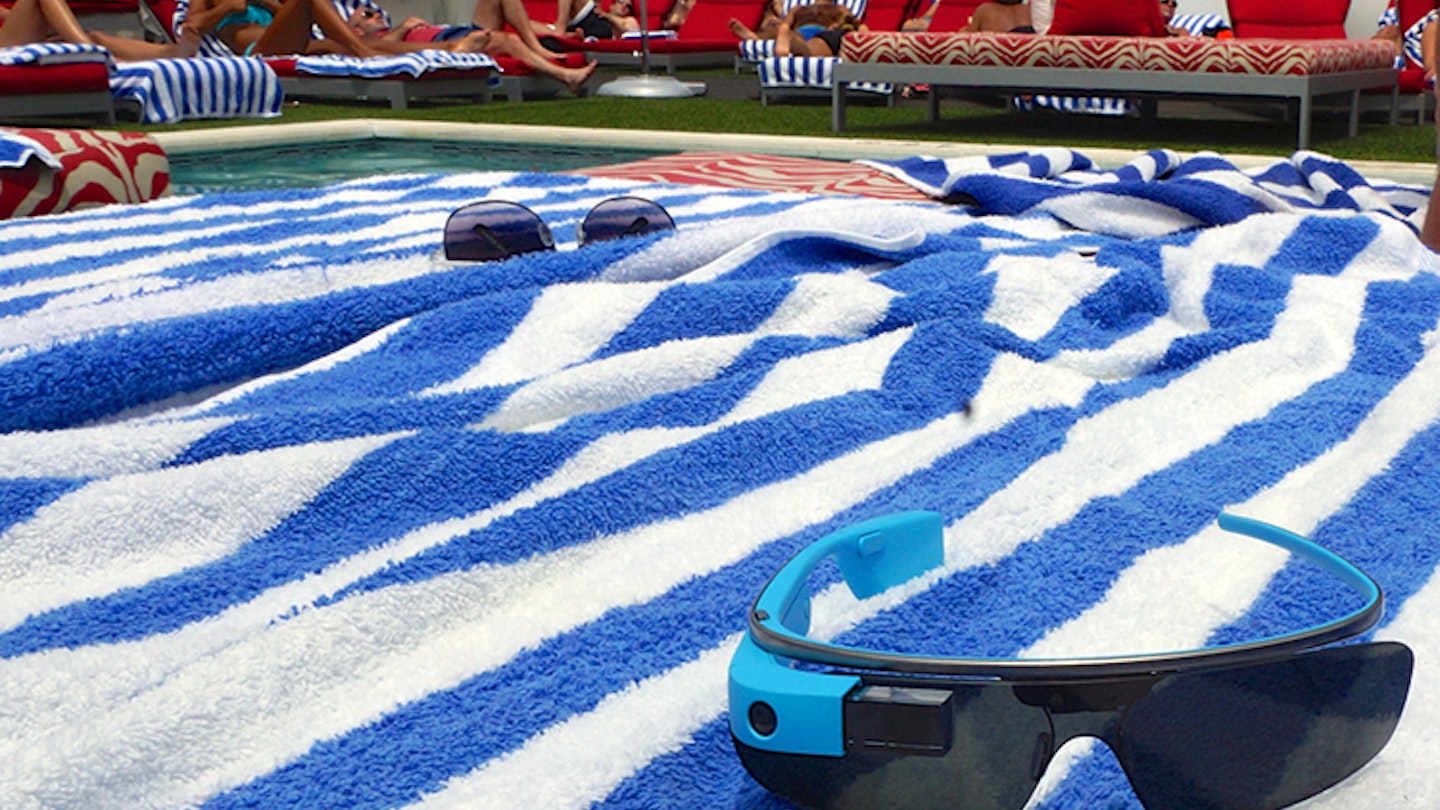Ever since Michael J Fox strapped on his self-lacing Nike Mag sneakers and slipped into a self-drying jacket in Back to the Future II, travel tech geeks the world over have dreamed of gadgets that make life on the road just a little bit easier. Imagine a self-drying t-shirt…we’d shave kilos off our luggage!
While the Nike Mag has seen the light of day (sans self-lacing function, unfortunately), we’re not even close to realising Robert Zemeckis’s vision of 2015. Flying cars? Pfft. All we’ve got to show for our 'progress' are internet-enabled fridges and Tesla electric cars. However, with the rise of superpowers such as Google, there is always hope.
So what world-changing travel tech might be just around the corner?
Google Glass
Google Glass by Ted Eytan. CC BY-SA 2.0.
There’s a huge surge of interest in wearable and location-aware tech. And Google Glass (www.google.com/glass) is arguably the most high-profile of them all. While Sergey Brin might currently be the only person on the planet to not look daft wearing one, there’s no denying the power and allure of a pair of ‘smart’ glasses that responds to voice commands.
Imagine a device that allows you to call up information on whatever you want, wherever you are. You’re standing at the base of the Eiffel Tower. You look at it wearing Google Glass and say, ‘Ok Glass, tell me about the history of the Eiffel Tower,’ and it comes up. Then you get hungry. ‘Ok Glass, where’s the nearest Michelin-starred restaurant?’. A few come up, so you pick one and Glass gives you turn-by-turn navigation. But the menu is in French…so...you guessed it. ‘Ok Glass, translate French to English.’ This is augmented reality as it was meant to be.
Google is now ramping up its initial ‘Explorer’ programme, which was only open to a select few, and adding new features such as prescription lenses and an earbud. It’s only a matter of time before this technology is mass produced, available at a reasonable cost and the phrase ‘Ok Glass…’ enters the everyday lexicon.
Smart(er) watches
A smartwatch by John Biehler. CC BY-SA 2.0.
Chester Gould gave Dick Tracy a fancy two-way radio watch back in 1946. Sixty-seven years later and we’re almost there with a watch that has phone capabilities. The smartwatch market has its genesis in the ingenious iPod Nano watch hack of 2010: the square, touchscreen, 6th generation iPod Nano can pass as a wristwatch when combined with a third-party strap-case accessory.
Current smartwatches include the Pebble (great battery life, black and white screen, doesn’t do much beyond providing notifications and connecting with your smartphone apps), Sony Smartwatch 2 (colour screen, pairs with apps on your phone) and Samsung’s Galaxy Gear watch (crap battery life, has a camera, fancy screen but currently only works with one smartphone). To find out more about these devices visit getpebble.com, www.sonymobile.com, and www.samsung.com.
None of them do anything beyond a) telling the time and b) providing a more accessible way to connect with apps and notifications on your phone. If you want something more useful than a watch, there’s Sony’s Bluetooth headset SBH-52 (www.sonymobile.com), which works as a mini-phone when paired to your actual phone. It’s a Bluetooth ‘handset’ the size of a stick of chewing gum that allows users to take calls in addition to viewing text messages and listening to the radio and music.
While smartwatches haven’t found their feet yet, Google and Apple are rumoured to be working on their own versions so watch this space. iWatch, hurry up!
3D printers and travel?
Printed model of a lion by Creative Tools. CC BY 2.0.
Remember when you needed to print out, say, a boarding pass or travel itinerary, and had to scramble to find an internet café? Well, with electronic check-ins and the information stored on smartphones, those days are long gone. The new inkjets/laserjets for the 21st century are affordable 3D printers such as the Bucanner (pirate3d.com).
Imagine if hostels and hotels started offering 3D printer use for guests. The travel-related options are interesting. Broke the buckle on your backpack? Simply use the 3D printer to create a new one. Forgot to pick up a souvenir and the shops are closed? Dash off a design of something local. Early adopters have already designed a toothpaste tube squeezer, wallets, camera housings, a working padlock, cups, ear phone hooks…the possibilities are near endless. And the cost of entry is getting cheaper by the year.
One device to rule them all
Sony Experia Ultra Z by Kārlis Dambrāns. CC BY 2.0.
There will come a day when devices offer enough battery life, ruggedness and functionality to replace a multitude of gadgets and ephemera. Case in point: on a recent trip, I vowed to do as much as I could with one device. So I took an Android ‘phablet’ - you’ve probably seen these oversized smartphones, such as the Samsung Galaxy Note, HTC One Max, or the whopping Sony Xperia Z Ultra.
I loaded the device with PDF versions of my Lonely Planet guides, GPS navigation apps such as Waze (www.waze.com) and Mapfactor (play.google.com), note-taking apps (Google Keep) and the full suite of social media apps (Facebook, Twitter, Instagram, Vine), eBooks, movies and music.
The key to unlocking its full potential is ensuring the phone gets fed with mobile data. Mobile data on the road is becoming less of an issue as smartphone penetration increases and data costs go down. Taking one device allowed me to:
- Ditch my physical guidebook
- Theoretically load hundreds of novels into a device one tenth the weight of War and Peace
- Save $9 a day on in-car navigation hire
- Ditch the iPod, the iPad, and the Macbook Air (the large phablet screen makes it easy to write and read emails, Skype, and do ‘work’-related things)
- Update my Facebook status and post Instagram holiday snaps without having to wonder constantly if I can find a café with free wi-fi
A year or two ago, I would have balked at this idea. My retort would have been, ‘Yeah, your gadget will be a paperweight when the battery dies’. Today, the massive battery in phablets means that I can pretty much use it all day (and night) without needing to recharge. Even then, carrying an external USB battery would still weigh less than carrying six other travel gadgets plus books.
The travel tech future isn’t quite here yet, but we’re close.
Aside from technology, Shawn Low loves coffee, boardgames and Lego. He has explored Southeast Asia, China and Australia for Lonely Planet, and observes a constant mantra wherever he goes: try anything once, eat anything once. Follow him at @shawnlow.
Fed up with taking forgettable shots of unforgettable sights? Master your camera once and for all with Lonely Planet's Guide to Travel Photography.
















